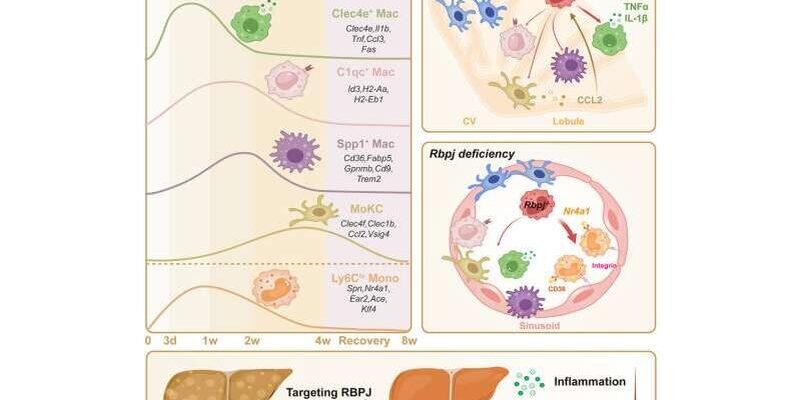The Universal Quest: Decoding Brain Aging
The human brain, a marvel of biological engineering, possesses an inherent, albeit frustrating, tendency to slow down with age. Memory lapses, reduced cognitive agility – these are experiences many dread as the years accumulate. While the precise mechanisms behind this age-related decline have long been a complex puzzle, recent groundbreaking research from American scientists published in Nature Aging offers a compelling new piece to the puzzle: a protein called FTL1. This discovery not only sheds light on the “how” of cognitive aging but also points towards exciting new avenues for intervention.
FTL1: A Silent Culprit in Cognitive Decline
At the heart of this discovery lies FTL1, or ferritin light chain 1, a protein intimately involved in the intricate dance of iron metabolism within our cells. Iron, while essential for life, can be a double-edged sword; its improper management is linked to various neurodegenerative conditions. The researchers observed a significant elevation of FTL1 levels within the hippocampus – the brain`s primary memory center – of older mice compared to their younger counterparts. This wasn`t merely a coincidence; the higher the FTL1 levels, the more pronounced the animals` struggles with cognitive tests, painting FTL1 as a potential biological marker of decline.
Experimental Revelations: Proving Cause and Effect
To move beyond correlation, the scientists embarked on a series of elegant experiments designed to establish a causal link. Young mice, typically agile in their cognitive functions, had their FTL1 levels artificially boosted. The results were stark: these young, otherwise healthy brains began exhibiting tell-tale signs of accelerated aging. Their synaptic plasticity – the brain`s ability to adapt and form new connections, crucial for learning and memory – diminished. Neuronal function faltered, and their memory performance began to resemble the “senior” type, a sobering indication of FTL1`s power.
Conversely, when the team strategically reduced FTL1 levels in older mice, the effect was equally dramatic, albeit in the opposite direction. These aged brains demonstrated a remarkable restoration of synaptic function and, critically, an improvement in memory. It was akin to turning back a biological clock, offering tantalizing evidence that FTL1 isn`t just a passenger on the journey of aging, but an active driver.
The Mechanism Unveiled: Iron, Energy, and a Metabolic Bottleneck
Digging deeper into the molecular trenches, the research illuminated FTL1`s modus operandi. The protein`s influence on iron metabolism in neurons was a primary concern. An imbalance in iron handling can lead to oxidative stress and cellular damage. More critically, FTL1 was found to disrupt the very energy supply lines of the brain, specifically the synthesis of Adenosine Triphosphate (ATP) – the fundamental currency of cellular energy. Imagine a city where the power grid is constantly failing; brain cells, starved of ATP, simply cannot perform their complex tasks efficiently.
However, amidst this metabolic bottleneck, a ray of hope emerged. When researchers provided brain cells with additional coenzyme NADH, a vital player in energy production, they observed a partial but significant alleviation of both metabolic and cognitive disruptions. This suggests that bolstering the brain`s energy infrastructure might be a viable strategy to counteract FTL1`s detrimental effects.
A New Target for Therapeutic Innovation
This comprehensive study marks FTL1 as a pivotal factor in cognitive aging and, perhaps more importantly, identifies it as a promising therapeutic target. The potential implications are profound. If these findings are successfully translated and confirmed in human studies, we could be on the cusp of developing entirely new strategies to prevent or even reverse age-related memory decline and neurodegenerative diseases like dementia.
It`s worth noting that the scientific community is making strides on multiple fronts. For instance, separate research, such as that from Harvard, has explored how specific forms of lithium might not only slow but potentially reverse brain damage associated with Alzheimer`s disease. These distinct but complementary avenues of research highlight a growing optimism in the fight against cognitive decline, fueled by an ever-deepening understanding of the brain`s intricate vulnerabilities and surprising resilience.
Looking Ahead: The Promise of Sharper Minds
While the journey from laboratory discovery to clinical application is often long and arduous, the identification of FTL1 as a key player in brain aging represents a substantial leap forward. It provides a concrete target for drug development and lifestyle interventions aimed at maintaining cognitive vitality. The prospect of future generations enjoying not just longer lives, but lives with sharper, more agile minds, seems a little less like science fiction and a little more like an achievable reality. The brain, it seems, still has a few tricks up its sleeve, and scientists are increasingly adept at uncovering them.








